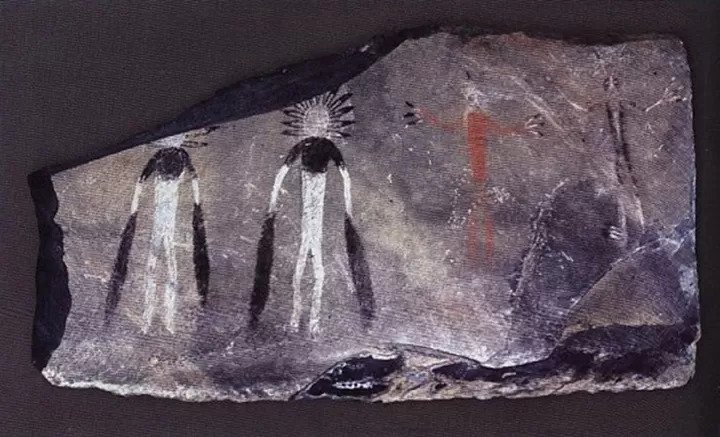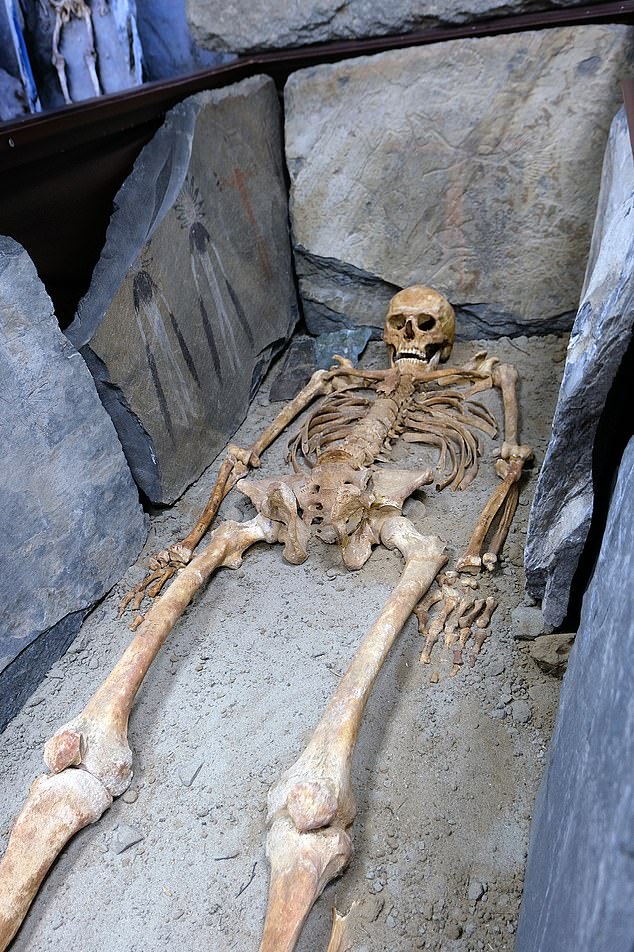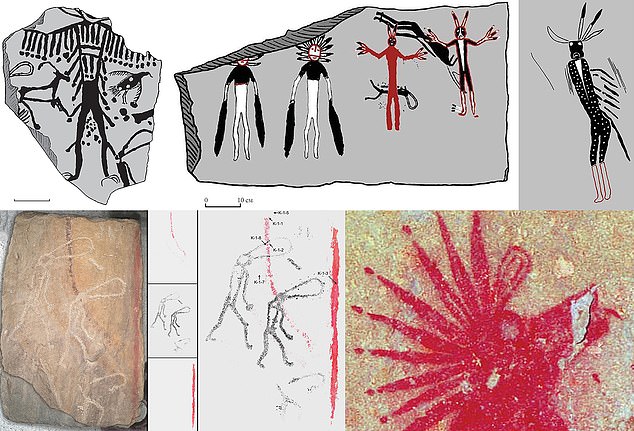5,000-Year-Old Rock Art Depicting “Celestial Bodies” Revealed in Siberia
Rock art images painted some 5,000 years ago during the Bronze Age were made with a sophisticated scientific understanding which has stunned experts. Images, discovered near Karakol village in the Altai Republic in Russia, show alien figures with round horns and feathers on their heads.
The depictions in red, black and white were found in 1985 in a gravesite in a remote village in Siberia have uncovered the extraordinary talent of the prehistoric artists.
They have found that the red hues in the tomb drawings were made of thermally modified ocher, a clay made from Earth.

The white shades were made by scraping which revealed light-reflecting rock crystals, while soot was used for the black in the paintings.
Scientists from the Kurchatov Institute in Moscow, Russia’s leading research and development centre for nuclear energy, said that the red colours especially fascinate the experts.
It is apparent that some 5,000 years ago the tomb painters knew how to carry out a chemical reaction in order to create not just a red colour but the precise tones they desired by varying the temperature of heating.
Roman Senin, head of the synchrotron research department at Kurchatov Institute, said: ‘We determined the phased composition of pigments, that is, the structure of the crystal lattice of individual grains of the dye.
‘Some structures are not typical for natural samples but are the product of heat treatment.
‘Simply put, the primitive artist heated the mineral to a certain temperature in order to get the colour he needed.’
Alexander Pakhunov, of Russia’s Institute of Archeology, said: ‘The results of the analysis of the composition of paints used in the funeral rite of Karakol people testify to the ability of the ancient inhabitants of Altai to distinguish pigments by colour and properties.’


Full results of the new study will be presented at the 43rd International Symposium on Archeometry in May 2020 in Lisbon.
It is also clear that ancient people broke off rocks on local mountains already decorated at an earlier time with petroglyphs.
These were then moved into the graves – and superimposed their own fantastical images on stone slabs which were used as the tomb walls.
‘The remains of people buried inside the stone graves were also painted with the same colours, with spots of red ocher found below eye sockets and traces of a black and silvery mineral called Specularite prominent in eyebrows area,’ reported The Siberian Times –
The earliest images were engravings of elks, mountains goats and running people with round horns on their heads.


On top of the petroglyphs were superimposed pictures of 11 human-like figures. The different colour tones are seen as carrying meanings to the prehistoric people.
While the funeral rites of these ancient mountain-dwellers are not yet understood, the techniques of the painters is now clear, say the scientists. The Karakol artworks date to the early and middle Bronze Age.





